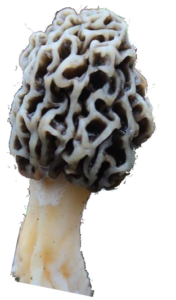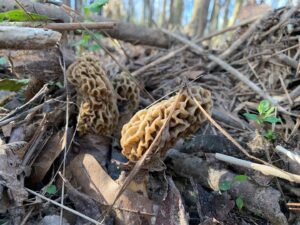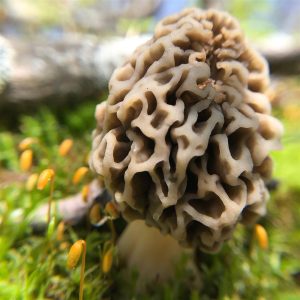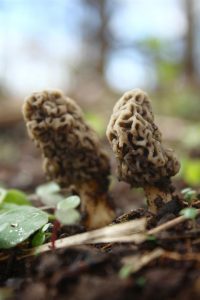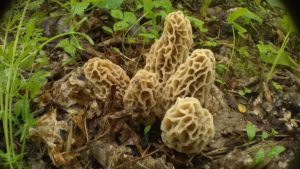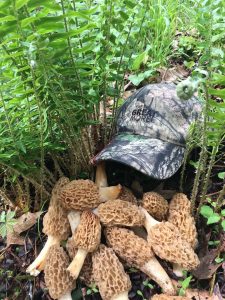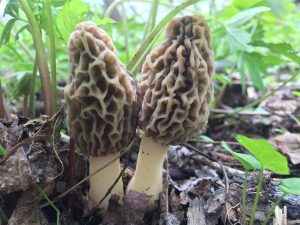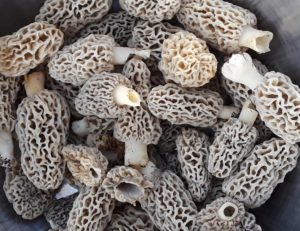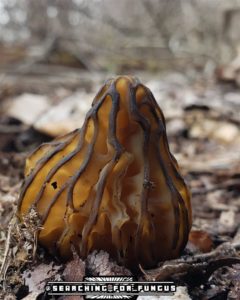The Midwest Region
This may very well be the region many refer to as the “haven” for morels. The morel mushroom can often times be found in abundance in many of the Midwest states. The Great Morel is going to break this region out into two sections. First let’s talk about the southern part of the Midwest states – these include Ohio, Indiana, Illinois, Kansas, and Missouri and we’ll through in western Pennsylvania, and West Virginia in here as well.
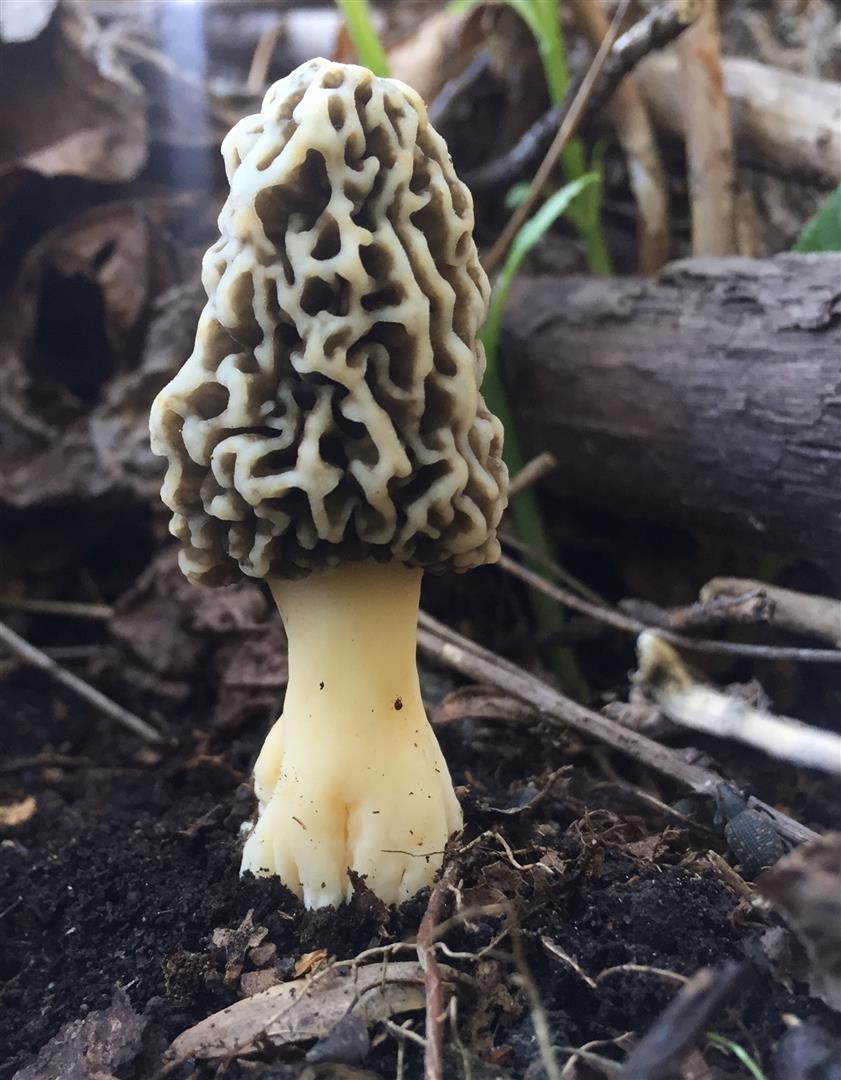
These states will begin searching for the morels the first week in April and the season can run into mid-May in the northern regions of these states. As with all regions, weather is one of the most often spoke about challenges, with Mother Nature dictating how well a season might be.
If Mother Nature cooperates, the ideal temperature will be 60-70 degrees day time, and in the 50’s at night. Add in a proper dose of spring rain and the morels are rejoicing, however, many know this is not always the case – recent case in point was the 2018 weather in this region. The weather was not the kindest and really confused the morels and the morel hunters.
Robert B from Illinois offers his thoughts on the ideal weather pattern – “When I see dandelions or other fungi I start looking good rain and temperatures staying in the upper 50’s lower 60’s overnight mid 70’s during the day for a few days”
The woods have a similar makeup, with the elm tree getting top mention, along with the Ash, Cottonwoods, Oak, Sycamore, and apple trees. In early spring you’ll find the mayapples (podophyllum) popping up which is always a good sign the time is right. This is not to say where there are mayapples there are morels. Some of the undergrowth in the woods are simply signs that morels should be up.
There is something about the elm where the bark is just starting to peel away from the tree that pulls morel hunters in for a closer look.
Mark F in Missouri offers his technique on the trees…”I do have an old oak that is first every year, at least the last 4 years it has been. Dead elms are always worth checking out, dead without all the bark gone/newly dead.”
Mark’s comment on the “almost dead elms” is a theory or technique many morel hunters will talk about. There is something about the elm where the bark is just starting to peel away from the tree that pulls morel hunters in for a closer look. Some will add, that if you throw in some old apple trees with these elms, you’ll have a must-look spot that you should really hunt hard.
One of the other common technique among those who contributed were how many will hunt the south facing slopes early, and the mention of creek bottoms. Depending on your geographical location in this region, elevation can come into play as well.
The black morels are what the early hunters head out to find. Many shroomers have their favorite spots for blacks and as most seasoned morel hunters know, they are the most difficult to spot at times.
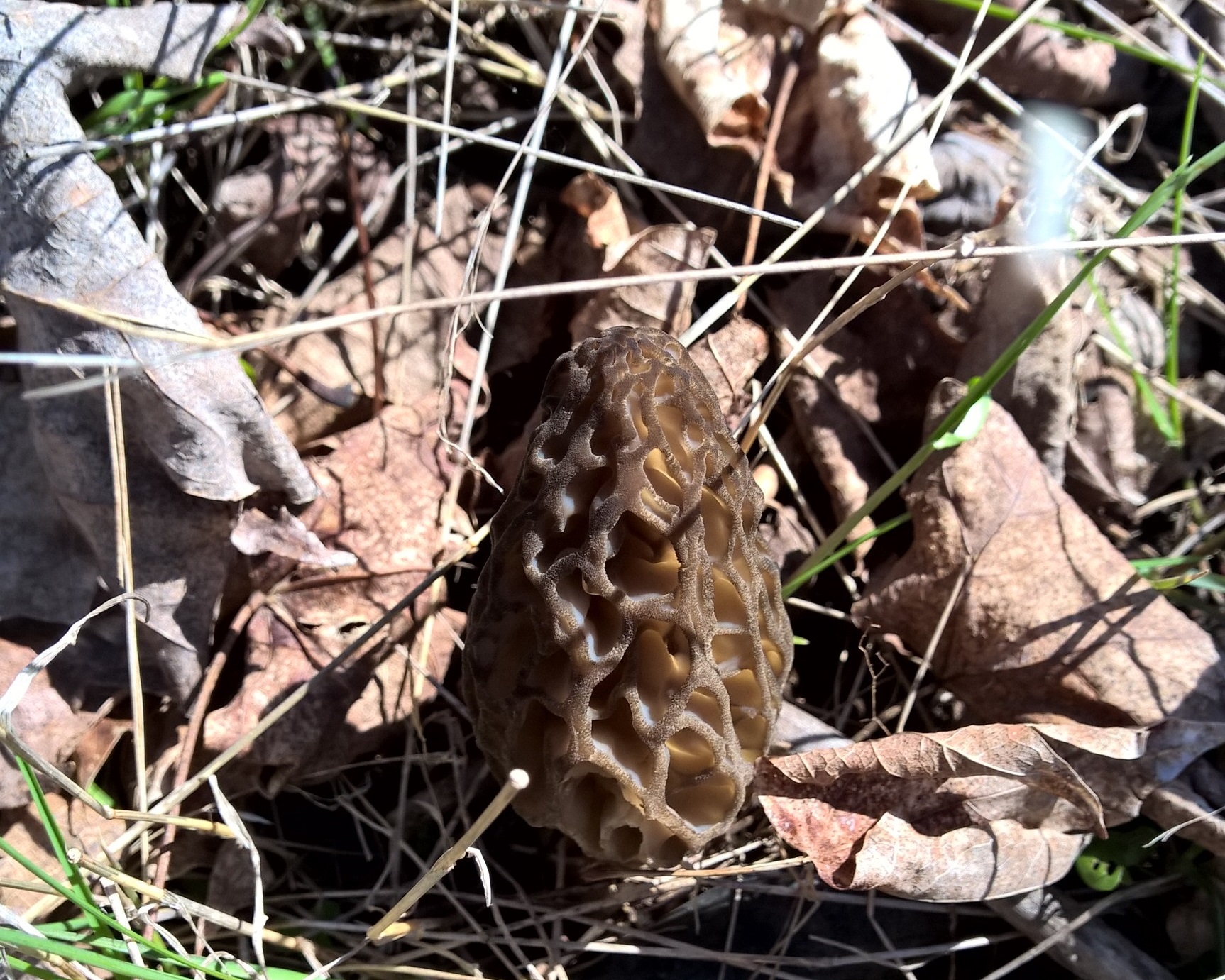
Wisconsin Black Morel
Jeff B from Missouri says…“hunt the black morels early before the undergrowth is too thick” and he goes on to offer his thoughts on the woods and his hunting techniques by sharing…”Mostly river bottom land open to the public. Some state conservation areas adjacent to Missouri and Mississippi rivers. Woody areas are prone to seasonal flooding so elms, cottonwood, beech, and poplars. Extensive undergrowth showing Virginia creeper (parthenocissus quinquefolia), poison ivy, and nettle.”
And Sydney in Illinois adds this comment on the woods…“I hunt in a relatively young wooded area filled mostly with oak, elm, and scrub trees. There is quite a lot of undergrowth of various kinds and the area is fairly moist because of a creek that meanders around the entire wood.”
Early in the season I will look for elms, around the edges of cedar stands, higher on the south facing slopes. As the season progresses, I’ll be looking around gooseberry patches and field edges in the creek bottoms
Once again we’ll note a common theme in hunting techniques – those who tend to find the trees to find morels, and those who hunt the terrain such as the hill slopes and valleys.
Adam, in Miller County Missouri offers his insight…”Early in the season I will look for elms, around the edges of cedar stands, higher on the south facing slopes. As the season progresses, I’ll be looking around gooseberry patches and field edges in the creek bottoms.”
And David in Morgan County Ohio shares his technique…”I hunt the land and the trees. I like to roam the woods so I hunt as I roam. Always stumble on something.”
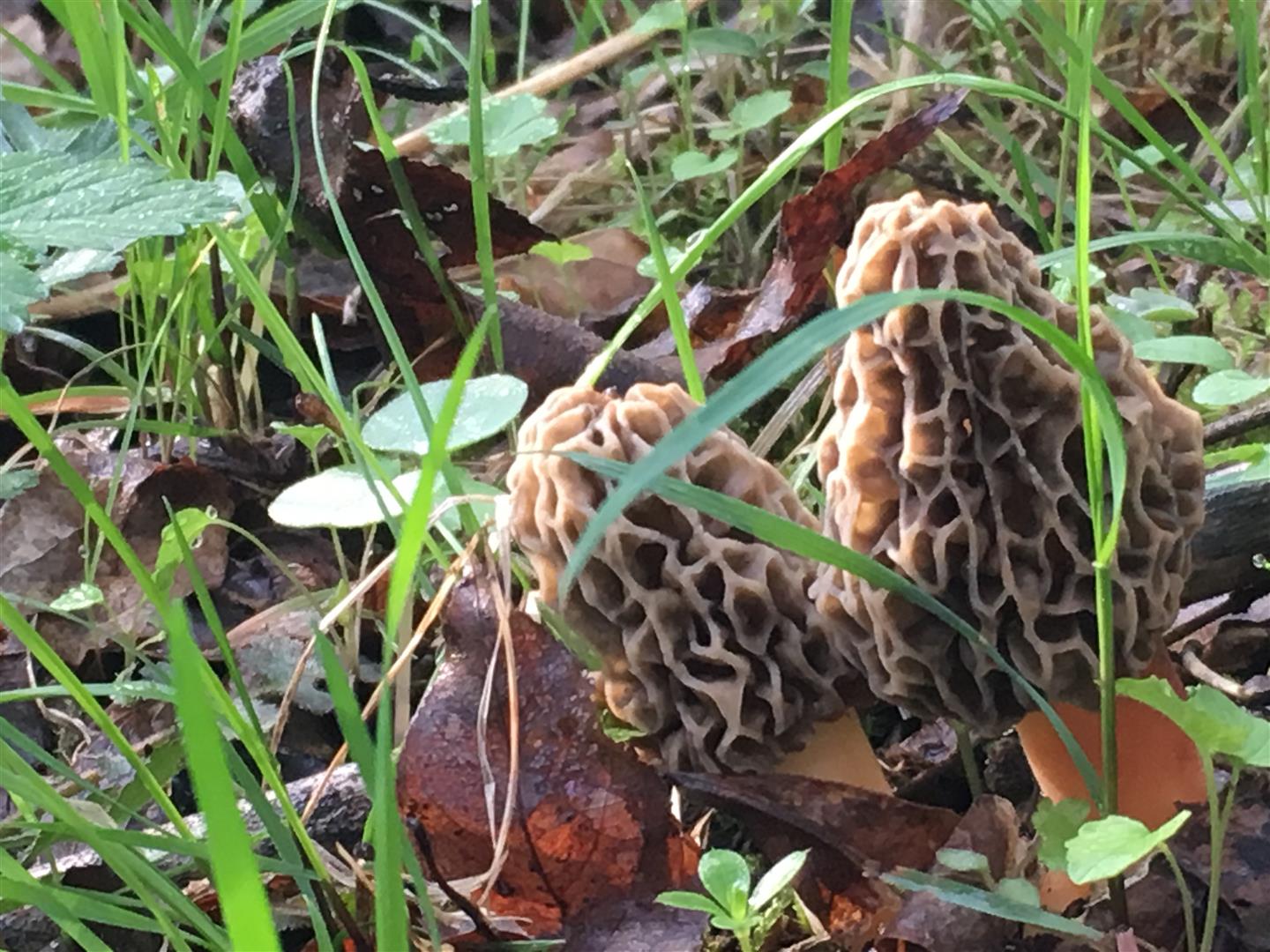
The spring weather truly dictates the morel life cycle and most who responded to the survey made mention to the typical spring weather in the Midwest, with fluctuating temperatures and rain levels. The 60-70 degree day time and night time temps in the 50-60 degree range is the preferred temperature for most. Enough cannot be said about Mother Nature’s effects on the morel season (regardless of geographical location) and without a doubt it can make or break a season.
The popularity of morel hunting and lack of land to hunt on for many lends a challenge. While this competition and lack of places to hunt, makes the challenge even greater, there is plenty of public land to hunt. The Great Morel encourages you to seek permission to hunt on private property, and many land owners (non-morel hunting landowners) will allow you if you simply ask. Take Tom in Indiana who was granted permission by telling the farmer, he’d “…pick up any trash” while he was out”
In closing up the southern area of the Midwest region, it is easy to understand the variables the morel and the morel hunter face – both controllable and non-controllable. The weather, the woods, the timing, your fellow morel hunter, and do not forget the dreaded tick! Make sure you pre-treat your clothing with some sort of tick repellent – be it natural or from a can.
As Robert in Illinois says… “Get out and look”
The Northern Midwest States
As the morels continue their migration north in the Midwest, the northern Midwest states such as Michigan, Iowa, Wisconsin, Minnesota and parts of North and South Dakota will start to have success. These states are what many refer to as the “Meca” of the morels. Morel hunters in this region like to report their morels by the pounds and often the harvest can be bountiful!
The season will begin around the first full week in May which is when reports of the grey and black morels start to make their appearance. Those in the northern parts of these states are about a week behind that and usually will start finding morels early to mid-May with the season stretching into the first week or two of June.
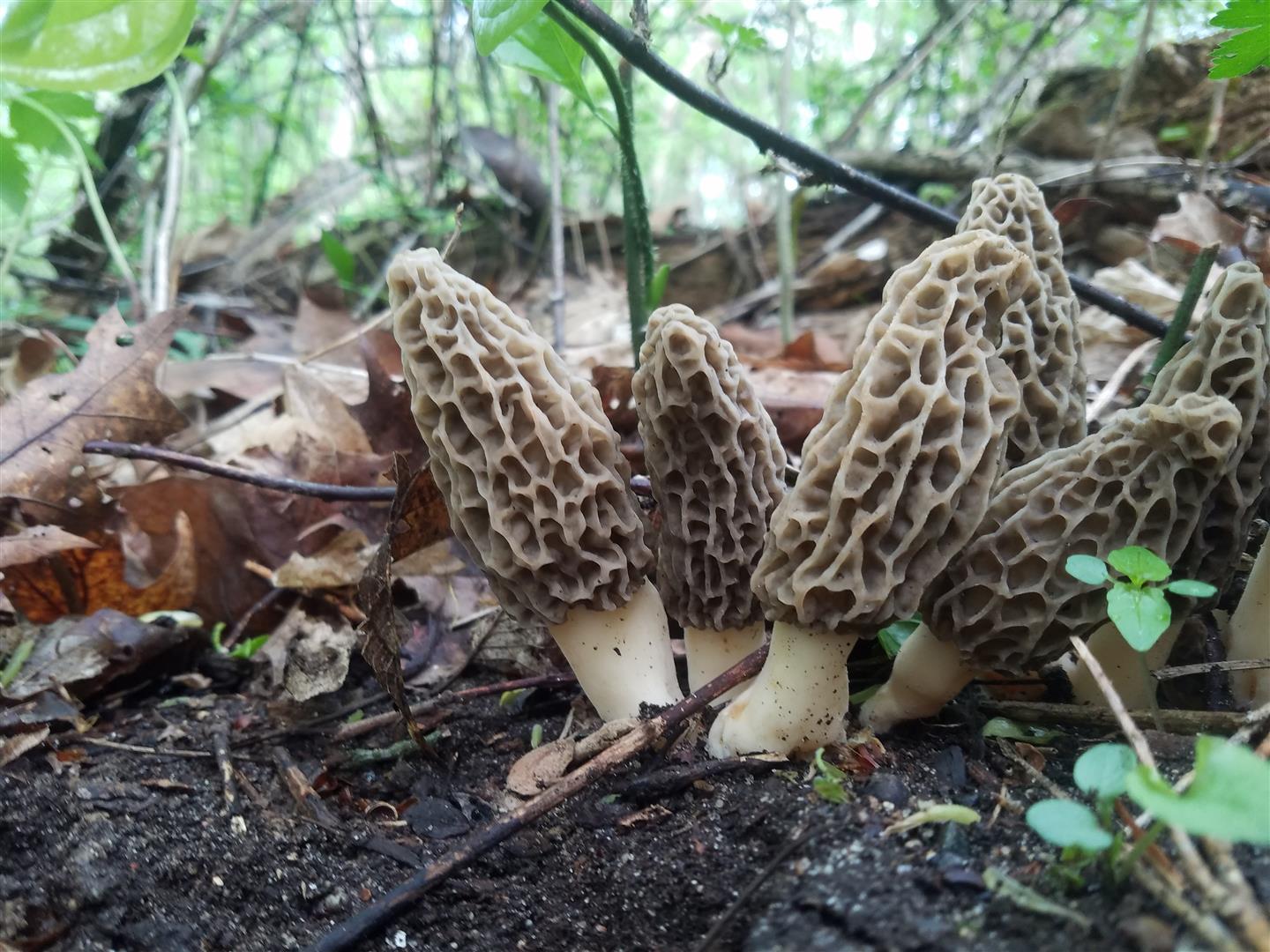 Morel hunting in most of the Midwest has always been a very popular spring pastime. So most people will tell you that yes the competition can be an issue and the survey results reflected that. A few offered some suggestions on how to get a leg up on your fellow shroomers with suggestions like: get out early in the morning, hunt the hard-to-get-to places, and ask permission. There are plenty of public acreage and while the popularity of morel hunting is high, there are still plenty of places to hunt legally.
Morel hunting in most of the Midwest has always been a very popular spring pastime. So most people will tell you that yes the competition can be an issue and the survey results reflected that. A few offered some suggestions on how to get a leg up on your fellow shroomers with suggestions like: get out early in the morning, hunt the hard-to-get-to places, and ask permission. There are plenty of public acreage and while the popularity of morel hunting is high, there are still plenty of places to hunt legally.
Travis S from Cass County Iowa gives these little tips…”I like to hunt in the rain. Keeps the bugs down and other people out of the woods. It’s been a weird couple years around here though we got a lot of rain early then things dried out quickly and out temperatures didn’t stay steady until the beginning of May” and “Slow down, look up at the trees as much as you do at the ground. Learn to identify your trees and their bark pattern”
The woods and vegetation does not vary much from most of the Midwest states, with the exception that the land tends to flatten out a bit more than in the southern parts of the Midwest. However, there is one constant – the king of trees once again is the elm tree, and Dee in Minnesota is one who echoes in agreement…”Here in Minnesota, virtually all of the morels I find are under dead/dying elm trees. I follow deer trails, there is a lot of * buckthorn hereabouts. Look for Mayapple plants, and open clear cut land if possible.”
See this link on the Minnesota DNR on the buckthorn plant and what they are doing to control
Also if anyone is new to morel hunting, you may have by now noticed the repetitive mention of the elm tree. The Great Morel has several links on the Link and Info page that will quickly direct you to a few of the better tree sites on the web.
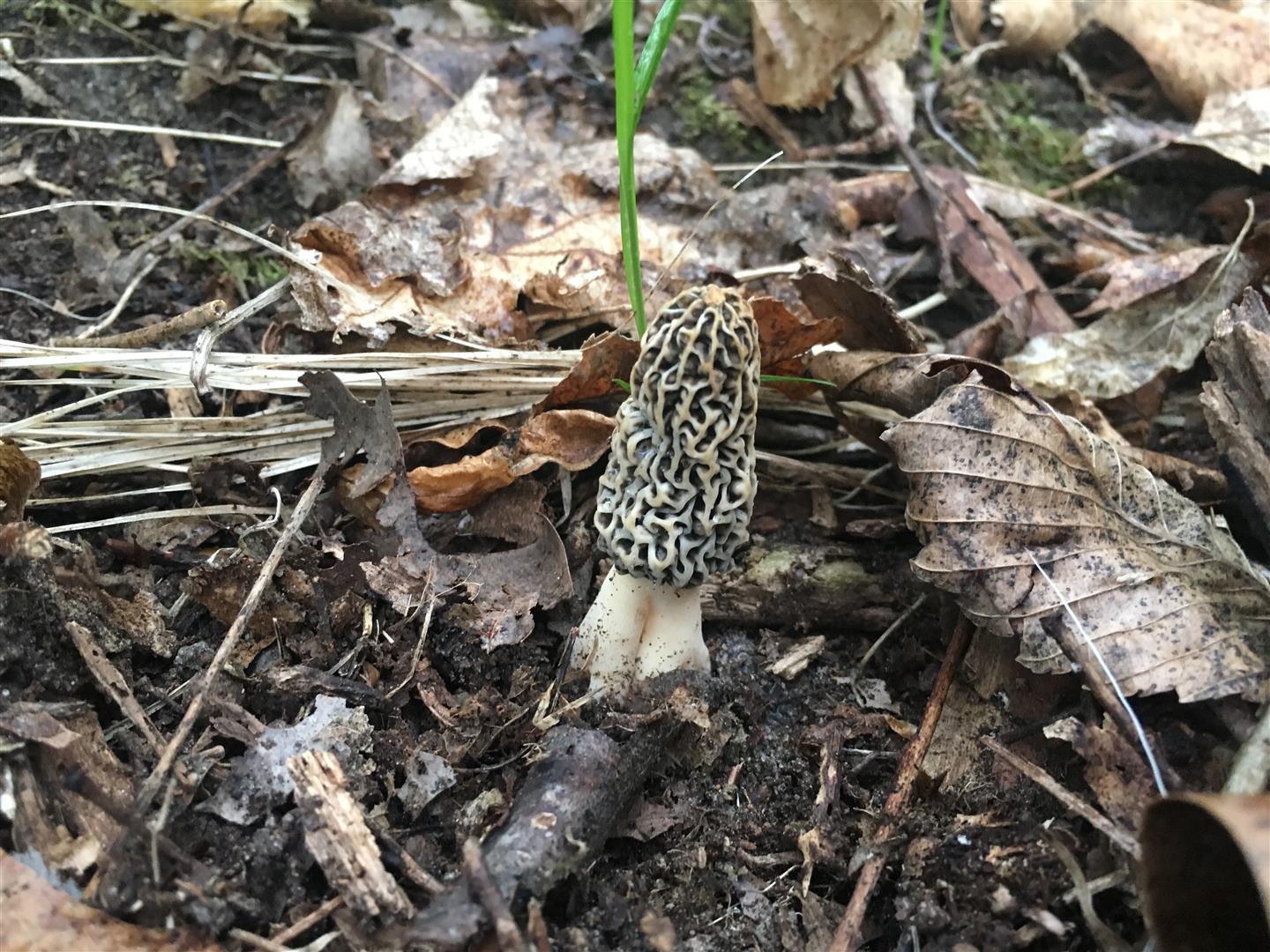
Photo courtesy of Evan S Winona MN (5/8/2018)
Robert B, who hunts morels in Tazewell County Illinois offers his suggestions…”The Mackinaw River flood plains sandy soil and open areas that get a lot of sun produce first. Then move into the tree lines and woods as season progresses all depends on the weather of course. Haven’t had a good season in a few years due to lack of rain when we need it. When I see dandelions I start looking for mushrooms and I cover a lot of ground walking miles a day and I’ve learned that’s the really only true way to get what you are looking for- get out and look- as always be respectful of private property”
It may be safe to say that this region has a reputation as having everything the morel loves – the ideal location for the morel. As with all regions though, the weather is the determining factor to a good year of a off-year, and this region is not any different.
